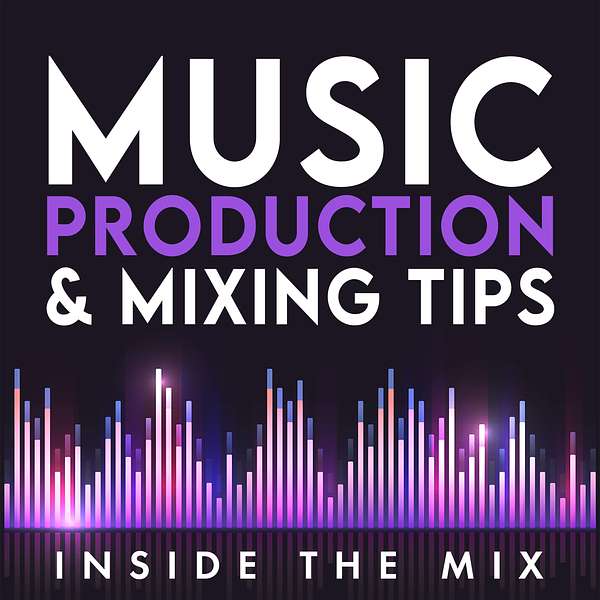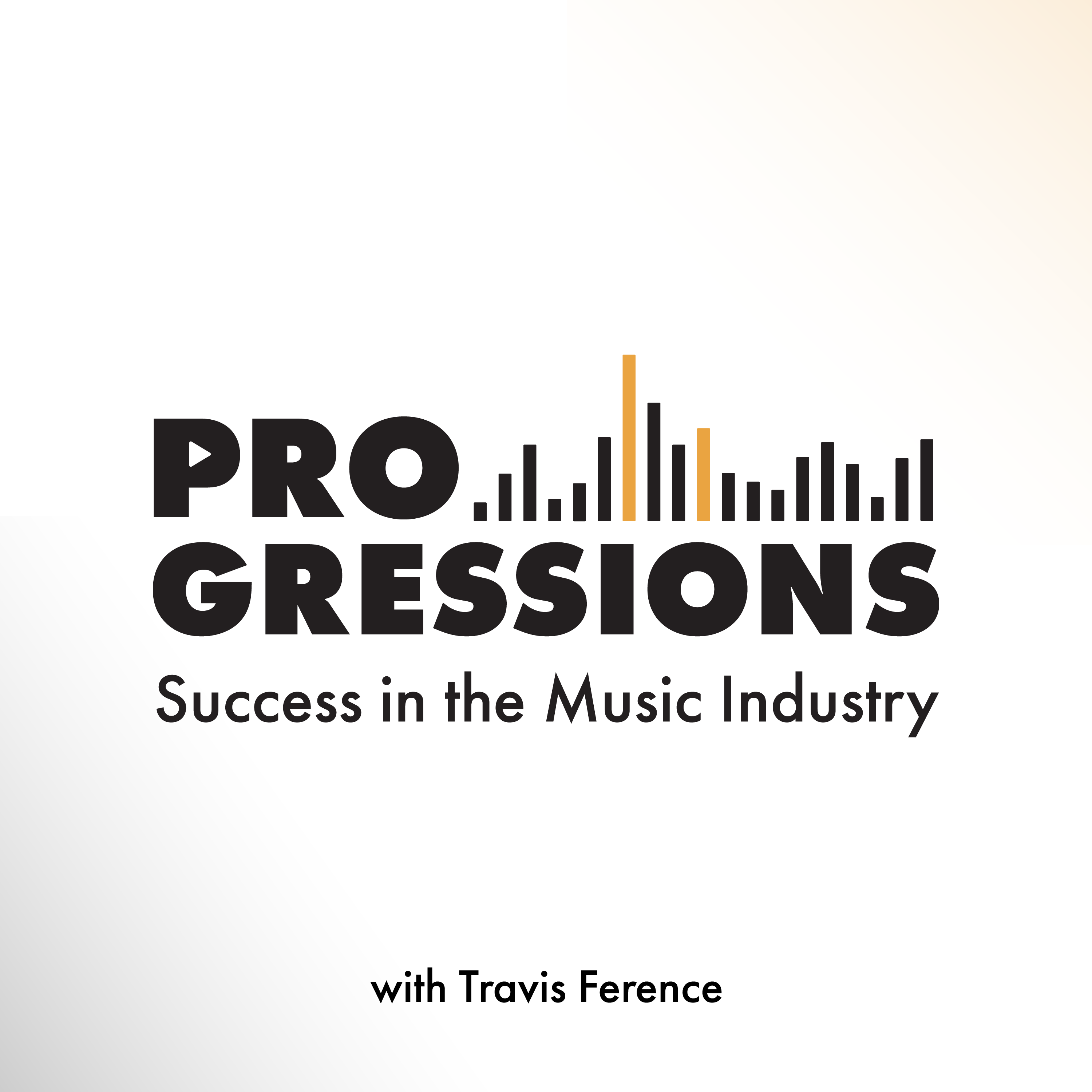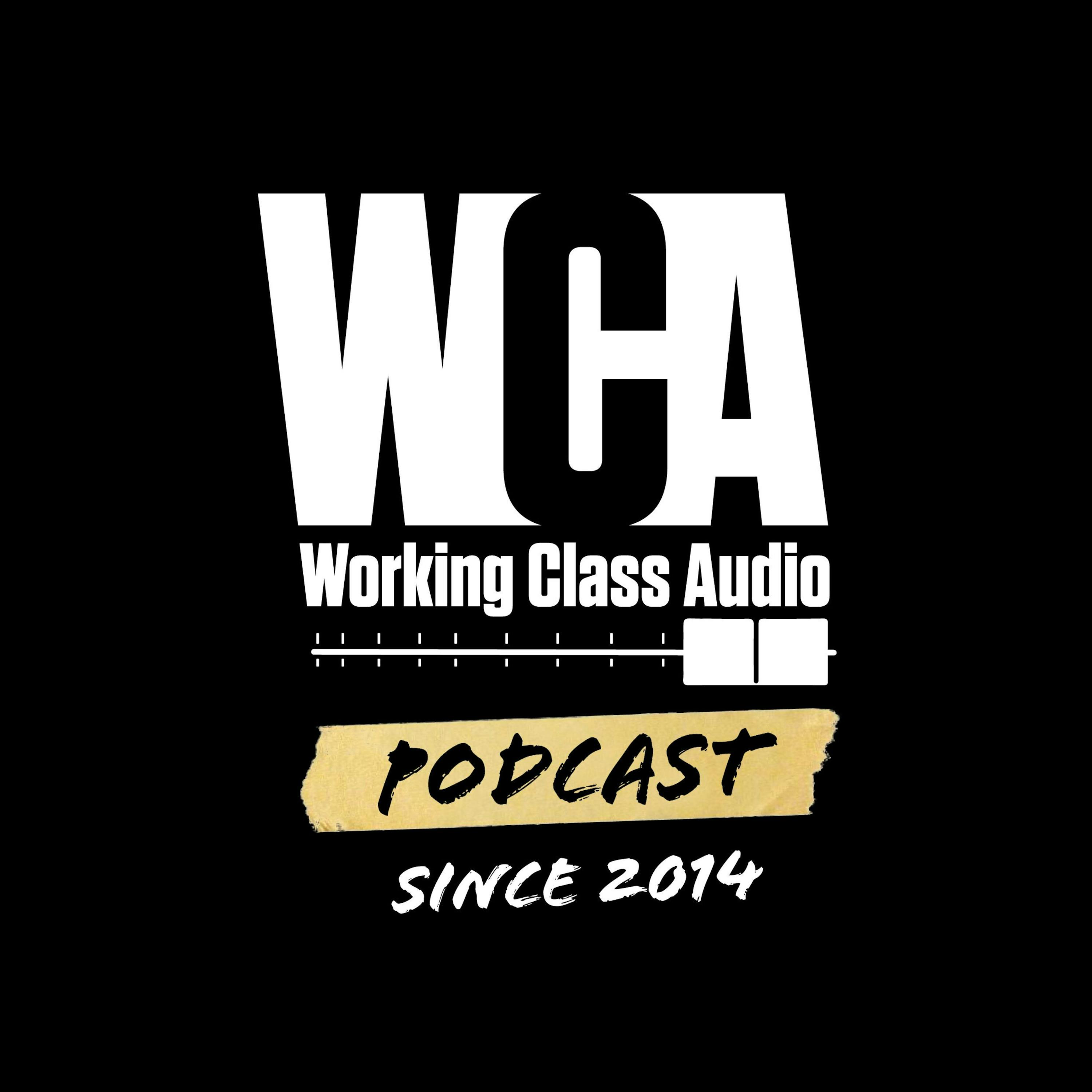
Music Production Podcast for DIY Music Producers and Artists | Inside The Mix
If you're searching for answers on topics such as: what is mixing in music, how I can learn to mix music, how to start music production, how can I get better at music production, what is music production, or maybe how to get into the music industry or even just how to release music. Either way, you’re my kind of person and there's something in this podcast for you!
I'm Marc Matthews and I host the Inside The Mix Podcast. It's the ultimate serial podcast for music production and mixing enthusiasts. Say goodbye to generic interviews and tutorials, because I'm taking things to the next level. Join me as I feature listeners in round table music critiques and offer exclusive one-to-one coaching sessions to kickstart your music production and mixing journey. Get ready for cutting-edge music production tutorials and insightful interviews with Grammy Award-winning audio professionals like Dom Morley (Adele) and Mike Exeter (Black Sabbath). If you're passionate about music production and mixing like me, Inside The Mix is the podcast you can't afford to miss!
Start with this audience-favourite episode: #175: What's the Secret to Mixing Without Muddiness? Achieving Clarity and Dynamics in a Mix
Thanks for listening!
Music Production Podcast for DIY Music Producers and Artists | Inside The Mix
#100: Celebrating the 100th Episode: Setting Up a Powerhouse Audio Mastering Template
If you are looking for audio mastering tips on creating a mastering template, free mastering plugins, and what makes a killer mastering workflow? Then check out EP 100 of the Inside The Mix podcast.
Hey there, it's your host Marc Matthews, and guess what? We're celebrating our 100th episode of Inside the Mix podcast - what a milestone! To honor this grand occasion, I'm unboxing the secrets behind setting up a killer mastering session and crafting a powerhouse mastering template that'll work with any Digital Audio Workstation (DAW). Imagine having your very own ready-to-go mastering template for all your future music projects - sounds exciting, right?
Gear up as I guide you through my workflow process, from setting up the master processor to blending that perfect parallel compression. I'll also be sharing some of my favorite free master plugins to enhance your music like never before. Finally, we'll delve into the magic of compare and reference channels, and how they can add that extra zing to your music by contrasting the master to the original mix and a reference track. Plus, let's not forget those well-deserved shout-outs to our amazing producer kick starters, the inspiring guests, the dedicated subscribers, and our lively Facebook community group. Let's turn the knob and master the art of mixing!
✸✸✸✸✸✸✸✸✸✸✸✸✸✸✸✸✸✸✸✸✸✸✸✸✸✸
Download the 5 Essential Free Mastering Plugins guide and immediately take your music mastering to lofty new heights. Download for free at: https://www.synthmusicmastering.com/free
Book your FREE 20 Minute Discovery Call
Follow Marc Matthews' Socials:
Instagram | YouTube | Synth Music Mastering
Thanks for listening!!
Hey, inside the Mix podcast fans. It's Mike and Naveena here. Follow me on the Master your Mix podcast or learn more at masteryourmixcom. Now you're listening to the Inside the Mix podcast and here's your host, mark Matthews. Hello and welcome to the Inside the Mix podcast. I'm Mark Matthews, your host, musician, producer and mix and mastering engineer. You've come to the right place if you want to know more about your favorite synth music artists, music engineering and production, songwriting and the music industry. I've been writing, producing, mixing and mastering music for over 15 years and I want to share what I've learned with you. Hello, folks, and welcome back to the Inside the Mix podcast. If you are a new listener, please do hit that subscribe button and if you're watching on YouTube, also hit the notification bell as well, so you can get notified of new episodes. Returning listeners, a big welcome back. Now. This is a celebratory episode. It is the 100th episode of the Inside the Mix podcast, which is amazing. So this podcast started two and a half years ago and I started out with episode one interviewing Zach Vortex, a producer from Bristol who's been on the podcast a couple of times, and at the time did I think we'd reach 100 episodes? I wasn't sure I didn't know how the podcast would pan out, but it's been amazing. It's been a fantastic ride and I've met some incredible people and made some amazing friends through this podcast, and long may it continue. So a big thank you to everybody who continues to support this podcast and those who find it and then join this amazing community that we have. So a big shout out to the producer, kick starters who've been on the podcast, the amazing guests I've had on the podcast, the producers, pub patrons as well, who've been sharing their music with this incredible audience, and also the subscribers as well. So the subscribers are amazing. They're supporting me being able to grow this podcast and if you want to join that group of people, just hit the support the show button in the episode description. A big shout out to block house as well, to Nick, who is the admin for the Facebook community group. Go and check that out inside the next podcast community on Facebook if you want to join that group. Loads of great stuff going on in there. And also the giveaway winners as well. So earlier this year in 2023, we were giving away mugs and t-shirts and stuff, and that will come back at some point. So a big shout out to those. So amazing stuff.
Speaker 1:100 episodes and long may continue, folks, but today's episode we're continuing with the mastering theme. So what we're going to be looking at today is how to set up a mastering session and also how to create a mastering template that you can use with every session, and we're going to be using Reaper for this. But you can take the idea and put it into any DAW. But before we do that, head over to synthmusicmasteringcom and grab my guide to the five essential free mastering plugins. You can also find this in the episode description. There are some amazing plugins in there that I use in every mastering session, so do go ahead and grab that. So let's dive into this episode. Ok, so let's dig into this mastering session that I've got here. So I'm doing this in Reaper and I've used Reaper for a long while, and I started using Reaper for Mastery when I spent some time at Half-Odd Mastering, probably about 10 years ago, a great mastering house mastering studio in Glamorgan, south Wales, one of my favorite places. I had a fantastic time living in Cardiff for three years. You can see here watching this on YouTube.
Speaker 1:I'm going to describe this for those listening. I've got my first channel, which I've called Master Processor and here on this channel is where I'm going to put my mix. So I put the mix on here and what I'll then do is I've got these three sort of markers that you can add if you wish, and one is called Max Short Term Luffs, one is called True Peak and one is called Head. So the first two are pretty self-explanatory Max Short Term Luffs and True Peak. Those are those values that I'm going to need when I'm doing mastering. And if you're unsure what Luffs are, do go and check episode 99 of the podcast where I go through that Allowness Units, full Scale. And then I've got Head right at the beginning here and that if I zoom in on YouTube you'll see. I'll give myself a 0.3 millisecond start because I don't want the music to kick in immediately. This is a single, so if it were an album it'd be slightly different. I might have them go in and interweaving and fade in in between each other.
Speaker 1:Let's see what plugins we've got on this Master Processor channel. So I'm going to open the plugin window and the first one I have is the TDR Nova EQ right at the beginning. I've then got the TDR Katelnikov Compressor. It's not enabled. I didn't use it in this session, but it's there as my template. I then got the Unison by Tone Projects.
Speaker 1:I love this compressor, so a big shout out to Brian Azad of Color Theory for putting me onto this compressor, and I think I also heard Elaine Rassnick of Daughterboard Audio on the Master Emix podcast mentioned this as well, which sort of reinforced my decision to purchase it, and it is a fantastic plugin, fantastic compressor. And I found this recently and I love this free plugin. This is the Ignite Amps PT EQX Poll Tech Emulation. It emulates, I'm led to believe, three different Poll Tech, eqs or Poll Tech, however you wanna pronounce it, and what I find with this plugin a little goes a long way. So when you're making changes with regards to equalization using this plugin, it's very noticeable, but I think it is absolutely fantastic. So do go and check that out. It's the Ignite Amps PT EQX plugin. It was free at the time of me getting it. I don't know if it still is.
Speaker 1:And then I've got the Shadow Hills Master Compressor. Now this here. I am literally just using this to run it through to get some sound out of this, so it's not actually compressing anything, I just want the sound of the nickel setting for this particular compressor. Next, I've got the Good Hurt Midside Matrix, which is another free, fantastic plugin that I do recommend going and checking out. And then I've got the Blackbox Analog Designed by Brainworks for some saturation right at the end. So that's my master process of channel.
Speaker 1:So, for the Reaper users out there, I wanna make you aware of this amazing feature that I didn't know existed until recently. And once again, I think I got this from Elaine Rastnik and I listened to the Master Emix podcast again. But there's this feature at the top here in the plugin window. If you're watching this on YouTube and it looks like a dial and it's facing all the way right. If I right click on it, I can delta solo. So it's the difference between dry and wet. So I'm gonna turn that on and what it will then do is it will allow me to hear the actual sound of the compressor. So this instance here I'm using the Shadow Hills Industries. I'm not compressing by any stretch, I'm just using the nickel, iron or steel sound of the compressor. So, using this feature, I can hear what impact that's having on the sound. So let's give that a go. So that's nickel, that's iron and that's steel. So I thought I'd just make Reaper users aware of that, if you're not already. So that is in the top right and it's this little dial next to the blue tick and if you right click you can delta solo the difference between dry and wet. Give it a go.
Speaker 1:So this next part of my workflow I have to give a shout out to Nick De Lorenzo of Panorama Mixing and Mastering, which is a fantastic mastering house and Nick is an incredible mastering engineer. Do go check out the YouTube channel Panorama Mixing and Mastering, because there is a wealth of free mastering content on there and I absolutely love it because Nick really drills in to the science and physics behind sound when he gives explanations, which I think is incredible. So do go check it out, and there's a few bits and pieces from my mastering workflow that I've lifted or magpied from Nick's workflows to do go check it out. I think it's an absolutely fantastic online resource. So my next one is loudness compression and I'm using this for upward compression or parallel compression. So I blend this into the mix because you can see in this example, if you're watching this on YouTube, I've got this set at minus 15. So it's just adding a bit more body to the quieter sections of this particular mix. And here, if I open the plug in window, I've got the Contelnikov compressor again and I've got standard clip after it as well, just to shave off any peaks that are just a bit too much and might have an impact on that overall headroom.
Speaker 1:So the next track is this. It is the actual Mix Master track and it's titled AA. Underscore song title, underscore mix master. And if I click on this, you'll see that I've got a gain plugin on here. I've got standard clip, I've then got ozone and then I've got ozone maximizer and this, basically, is where I am then using limiting to get it to the perceived loudness that I want to achieve. So I've got my gain plugin, so I use this. I'm gain staging throughout the entire process of mastering. So gain staging, basically what I'm doing is making sure that the level is at the optimum level, feeding into the next link in the chain. Okay, that is essential. What gain staging is? You're just making sure it's that the optimum level to feed into the next link in the chain, and that's why I've got this gain plugin here, because I wanted to make sure. As you can see here I've got set to minus 1.2 before it then goes into standard clip. And then I've got my ozone 10 and I'm using the maximizer here and then I've got a second maximizer after that.
Speaker 1:So next I've got the final two tracks in this five track mastering template. I've got the fourth one, which is my compare channel or track, and here is literally just the mix, the artists interpretation or my original mix, if it's my own material, and I'm going to use this to compare against my master so I can see what changes have been made and see if it still fits within the desired created vision of the mix itself. Then I've got a reference track. So I am a huge advocate of using references, not only in mastering but in mixing and in songwriting and production as well. That being said, I'm being very hip hypocritical here. I haven't used a reference because I'm very familiar with this artists work and at this point I didn't feel I needed a reference. So call me a hypocrite, but otherwise this is where I put a reference and I would AB the master against this reference track.
Speaker 1:So those are my five tracks that I use in my mastering template and let's have a quick look at signal flow and what's happening here. So I've got my master processor track and if I open the routing, you'll see that this is rooted to the AA song title mix master. There's also a send going to the loudness compressor as well, and they're both set at zero dbfs. Then I have my loudness compressor and that is also rooted to the AA song title mix master track as well. And then I've got my AA song title mix master here, which is record enabled, so I can then record the actual finished master when I am ready. The compare is just rooted to the master send and so is the reference as well. So it's some really quick rooting in there. So that's how I would root it, and you can do that with any DAW.
Speaker 1:Everything I've showed you here today is possible within any DAW. However, if I have got that statement wrong, please do let me know in the YouTube comments or send me a message on Instagram at inside the mix podcast, and that is it. Simple as that. That is a really basic mastering template that you can use in any DAW. So let's do a quick summary.
Speaker 1:I've got my master processor where I'm putting my mix and I'm doing the bulk of my processing. I've then got my loudness compression and that is parallel compression in essence, and I'm blending that in to the mix master. And then I've got my master channel, which is where I have my limiting and my clip and my gain plugins as well, and I'm going to use that and it's record enabled so I can then record the track into my DAW. You want some happy with the mastering? Then I've got my compare, my compare channel I'm using so I can compare my master to the original mix, and then I've got my reference channel so I can compare the master to a reference track. It's as easy as that. Once you have this template set up, just go in and to I'm sure this is the same with any DAW and just put file save as template. And I call this in brackets pre, then after that master. Okay, folks, give it a go, but before you leave, do head over to synthmusicmasteringcom and check out my guides to the five essential free mastering plugins.









